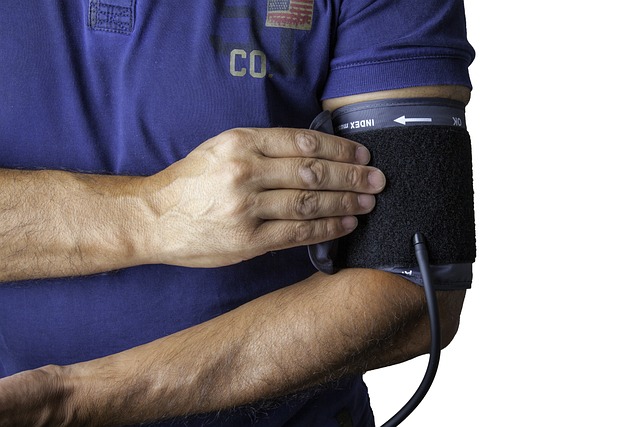Comprehensive Guide To Recognizing The Indicators of Heart Disease
Heart disease remains one of the leading causes of death worldwide, affecting millions of people each year. Recognizing the signs and symptoms of heart disease early can be crucial for timely intervention and treatment. This comprehensive guide aims to help you understand the key indicators of heart disease, its causes, and when to seek medical attention.

What are the common signs of heart disease?
Heart disease signs can vary depending on the specific condition, but some common indicators include:
-
Chest pain or discomfort (angina): This is often described as a feeling of pressure, squeezing, fullness, or pain in the chest. It may be triggered by physical activity or emotional stress.
-
Shortness of breath: Difficulty breathing, especially during physical exertion or when lying down, can be a sign of heart problems.
-
Irregular heartbeat: Palpitations or the sensation of a racing, pounding, or fluttering heart may indicate an arrhythmia.
-
Fatigue: Unexplained tiredness or weakness, especially during activities that were previously easy to perform, can be a sign of heart disease.
-
Swelling: Edema, or swelling in the legs, ankles, and feet, can be caused by fluid buildup due to heart problems.
It’s important to note that these signs can also be associated with other conditions, so proper medical evaluation is essential for an accurate diagnosis.
What are the most common heart disease symptoms?
While signs and symptoms often overlap, some specific heart disease symptoms include:
-
Nausea and vomiting: These symptoms, especially when accompanied by other heart-related signs, can indicate a heart attack.
-
Cold sweats: Sudden, unexplained sweating, particularly if accompanied by chest pain, may signal a heart attack.
-
Dizziness or lightheadedness: This can be caused by an irregular heartbeat or reduced blood flow to the brain.
-
Neck, jaw, throat, or back pain: Discomfort in these areas, especially when combined with chest pain, can be a sign of a heart attack.
-
Numbness or weakness: Particularly in the arms, this symptom may indicate reduced blood flow due to heart problems.
-
Sleep disturbances: Sleep apnea and other sleep disorders are often associated with heart disease.
If you experience any combination of these symptoms, especially if they’re severe or persistent, seek immediate medical attention.
What are the primary causes of heart disease?
Understanding the causes of heart disease can help in prevention and early detection. Some primary causes include:
-
High blood pressure: This puts extra strain on the heart and blood vessels, increasing the risk of heart disease.
-
High cholesterol: Elevated levels of LDL (bad) cholesterol can lead to the buildup of plaque in the arteries.
-
Smoking: Tobacco use damages blood vessels and increases the risk of atherosclerosis.
-
Obesity: Excess weight puts additional stress on the heart and is often associated with other risk factors like high blood pressure and diabetes.
-
Physical inactivity: A sedentary lifestyle contributes to obesity, high blood pressure, and high cholesterol.
-
Diabetes: This condition can damage blood vessels and nerves that control the heart.
-
Poor diet: A diet high in saturated fats, trans fats, and cholesterol can contribute to the development of heart disease.
-
Excessive alcohol consumption: This can lead to high blood pressure, heart failure, and an increased risk of stroke.
-
Stress: Chronic stress may contribute to high blood pressure and other risk factors for heart disease.
-
Family history: Genetic factors can increase the risk of developing heart disease.
How can you recognize the early indicators of heart disease?
Identifying early indicators of heart disease is crucial for prevention and timely treatment. Here are some ways to recognize potential issues:
-
Regular health check-ups: Schedule annual physicals with your healthcare provider to monitor blood pressure, cholesterol levels, and other relevant markers.
-
Pay attention to subtle changes: Notice any changes in your energy levels, exercise tolerance, or breathing patterns.
-
Monitor your blood pressure: Regular at-home blood pressure checks can help identify hypertension early.
-
Be aware of your family history: Understanding your genetic predisposition can help you stay vigilant about potential heart disease risks.
-
Listen to your body: Don’t ignore persistent discomfort or unusual symptoms, even if they seem minor.
-
Assess your lifestyle: Evaluate your diet, exercise habits, stress levels, and other lifestyle factors that may contribute to heart disease risk.
When should you seek medical attention for potential heart disease?
Knowing when to seek medical help is crucial in managing heart disease. Consider the following scenarios:
-
Chest pain or discomfort lasting more than a few minutes
-
Shortness of breath that doesn’t improve with rest
-
Unexplained fatigue or weakness that persists for several days
-
Swelling in the legs, ankles, or feet that doesn’t subside
-
Irregular heartbeat that lasts for more than a few minutes
-
Sudden, severe symptoms like intense chest pain, difficulty breathing, or loss of consciousness
If you experience any of these symptoms, especially if they’re severe or accompanied by other signs of heart disease, seek immediate medical attention. Remember, early intervention can be life-saving when it comes to heart disease.
In conclusion, recognizing the indicators of heart disease is crucial for maintaining cardiovascular health. By understanding the signs, symptoms, causes, and early indicators, you can take proactive steps to protect your heart and seek timely medical attention when needed. Regular check-ups, a healthy lifestyle, and awareness of your body’s signals are key to preventing and managing heart disease effectively.
This article is for informational purposes only and should not be considered medical advice. Please consult a qualified healthcare professional for personalized guidance and treatment.




